Lake Peipus in Estonia is located in the eastern part of the country and is known for its onion farms and its 'old believers' population. Here we ended up at a lively village festival, had lunch at a beautiful ghost castle and frolicked on a rollicking beach.
Innehållsförteckning
Lake Peipus in Estonia
Located on the border between Estonia and Russia, Lake Peipus is Europe's fifth largest lake after Ladoga, Onega, Lake Vänern and Lake Saimaa. We drove from Narva to the northernmost part of the lake, which took about 1 hour and 20 minutes.
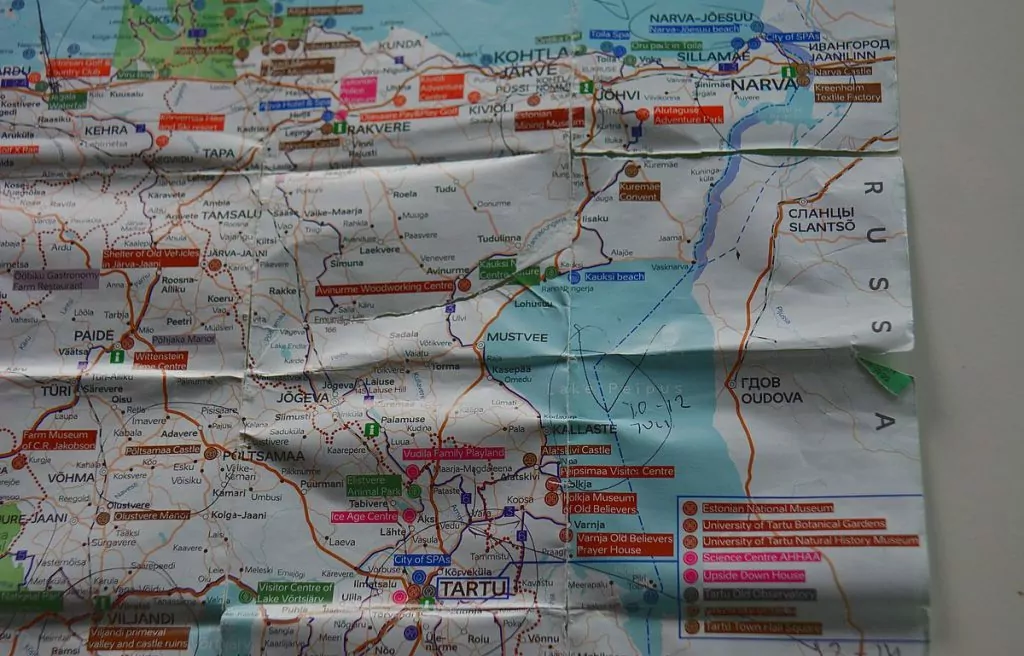
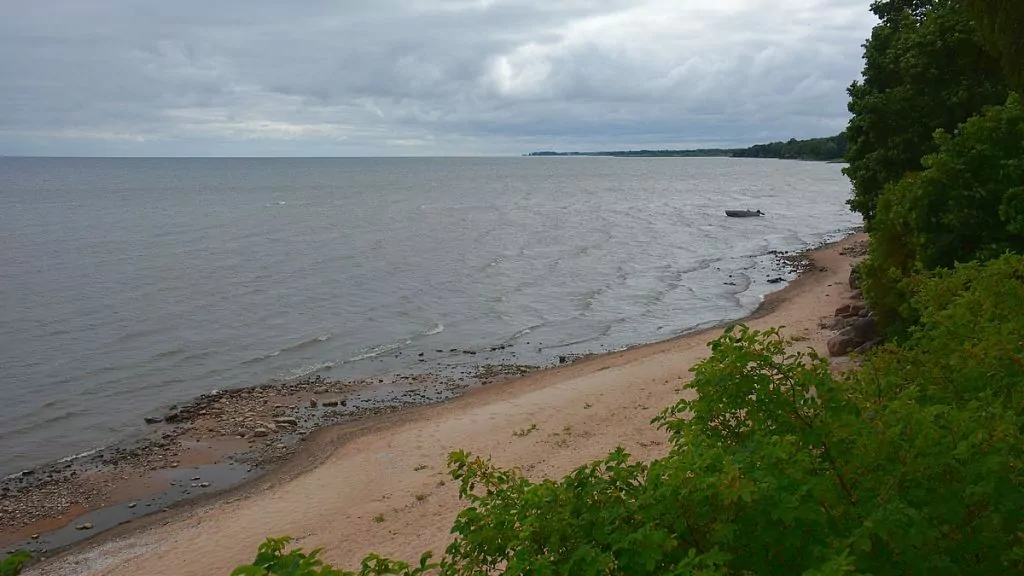
Village festival in Rannapungerja, by Lake Peipus
We had been in contact with the local tourist office in the region, Visit Peipsi, in advance and called when we were on our way. (We just think Pepsi when we hear the word, haha.) They were just organising a local festival, Lake Peipus festival (Peipsi Järvefestival), and wondered if we wanted to come. Of course we did!
The Lake Peipus festival travels by boat around the lake, from village to village, for a week. When we arrived, the festival was in the village of Rannapungerja. The weather was really dreary, but that didn't stop the villagers from gathering around stalls and various playful activities.
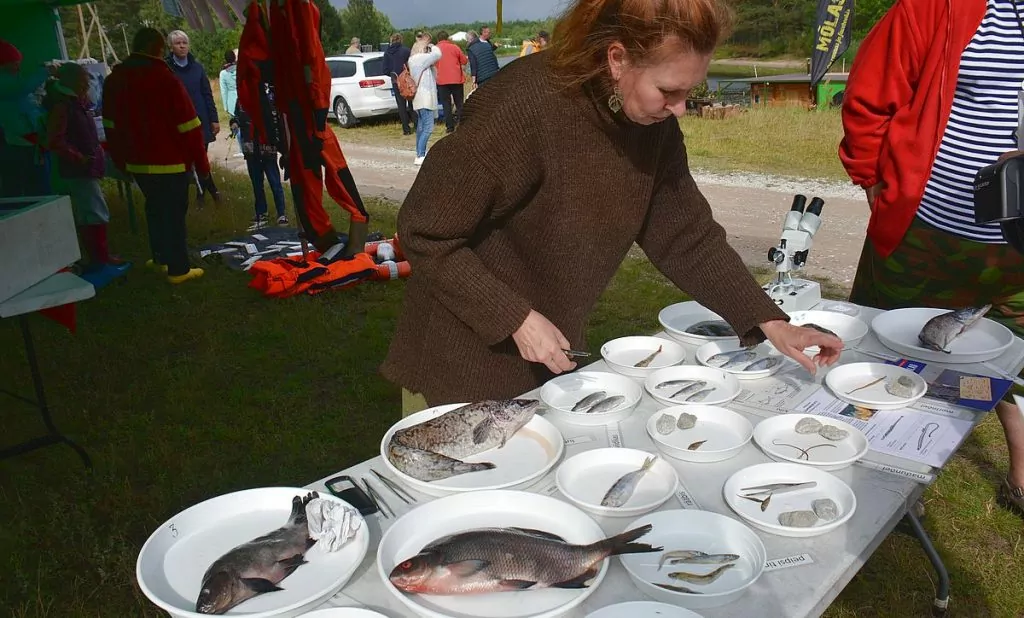
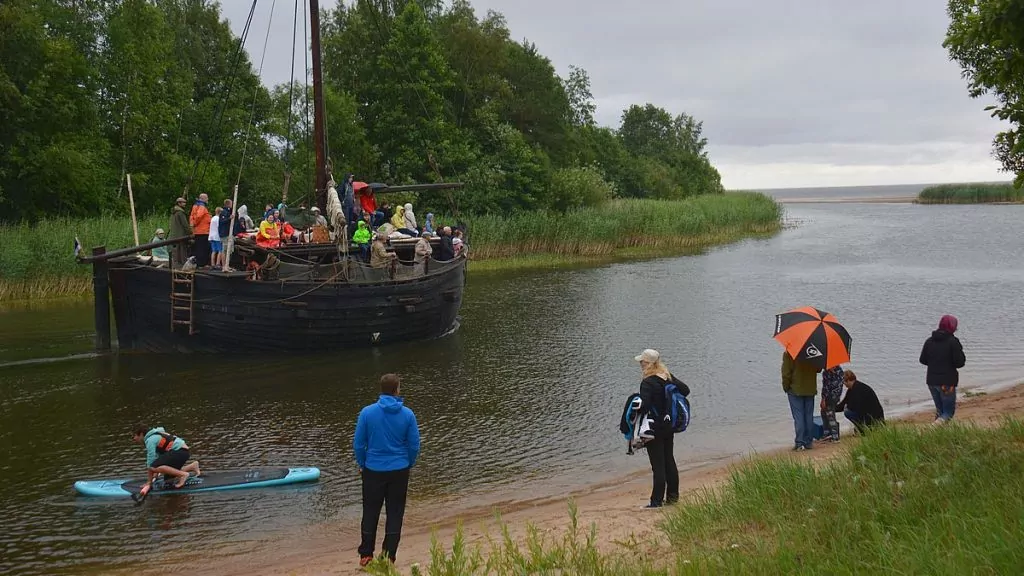
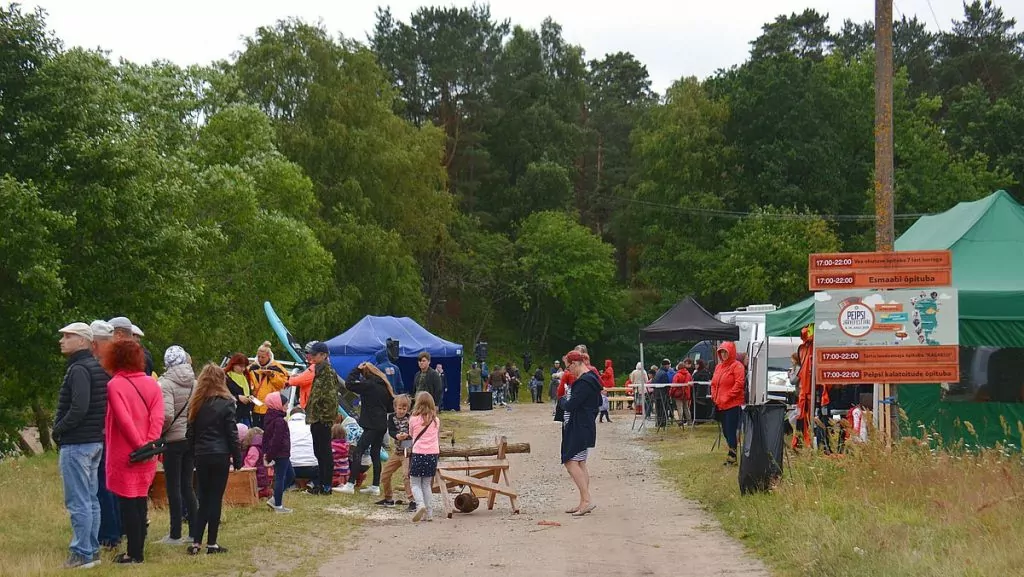
We bought a smoked perch and a local beer each and munched in the campervan, listening to the band playing and watching the locals dancing.
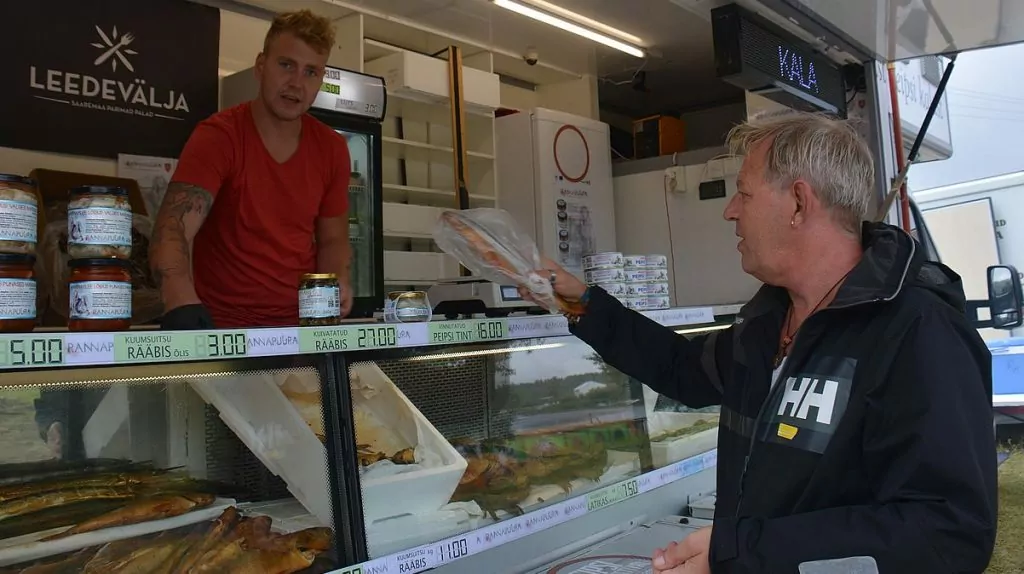
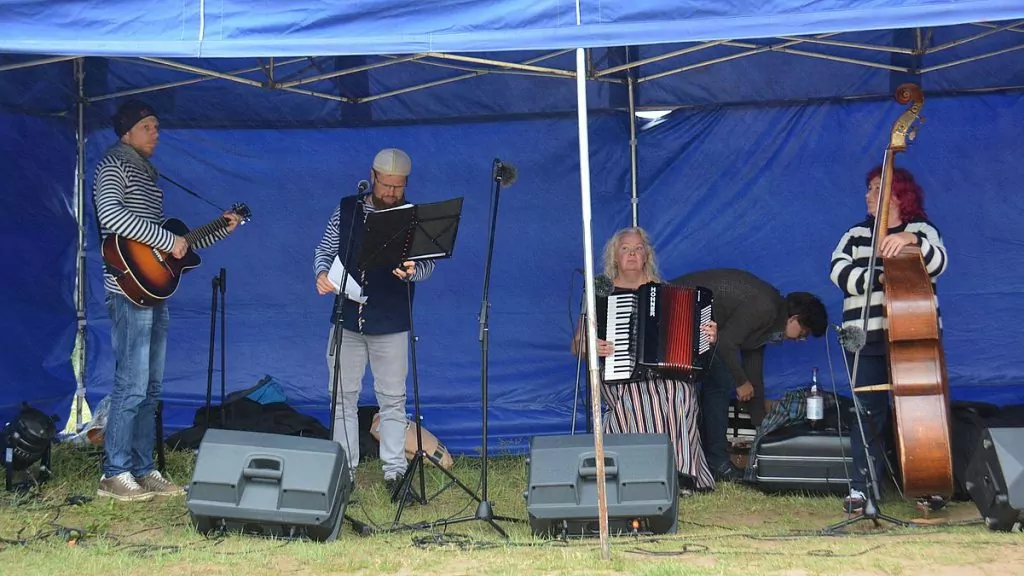
Boat trip in the evening on Lake Peipus
The old wooden ship, which is the signature of the festival, made several trips with villagers during the evening. We joined the last tour at 10pm. At this time it was almost magical to glide around on the calm lake. Very nice!
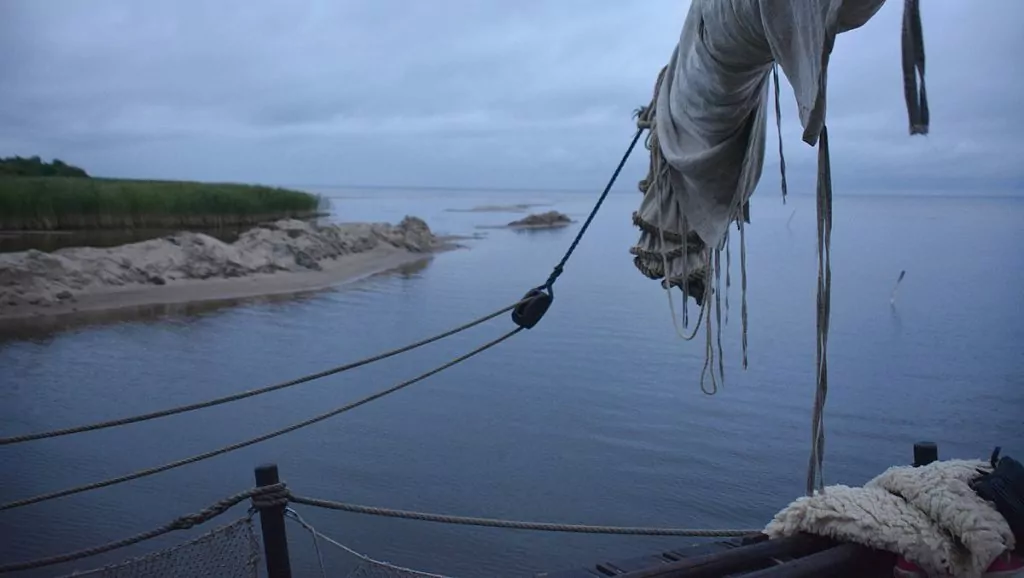
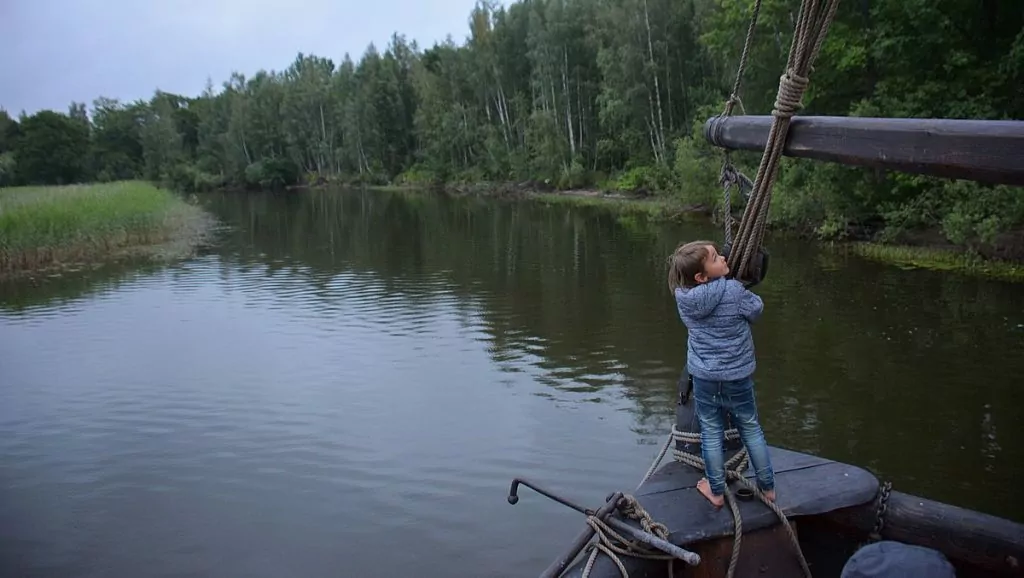
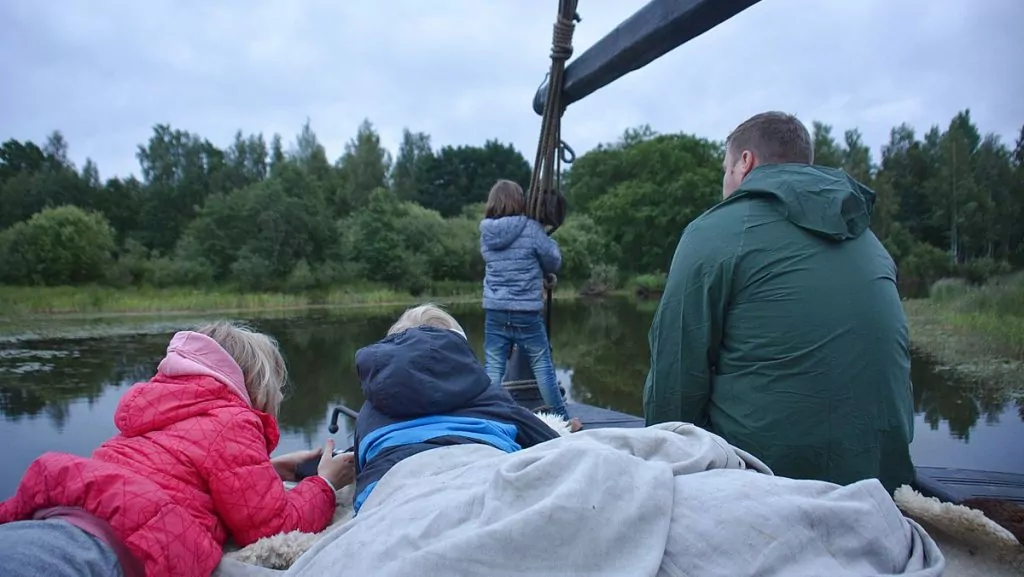
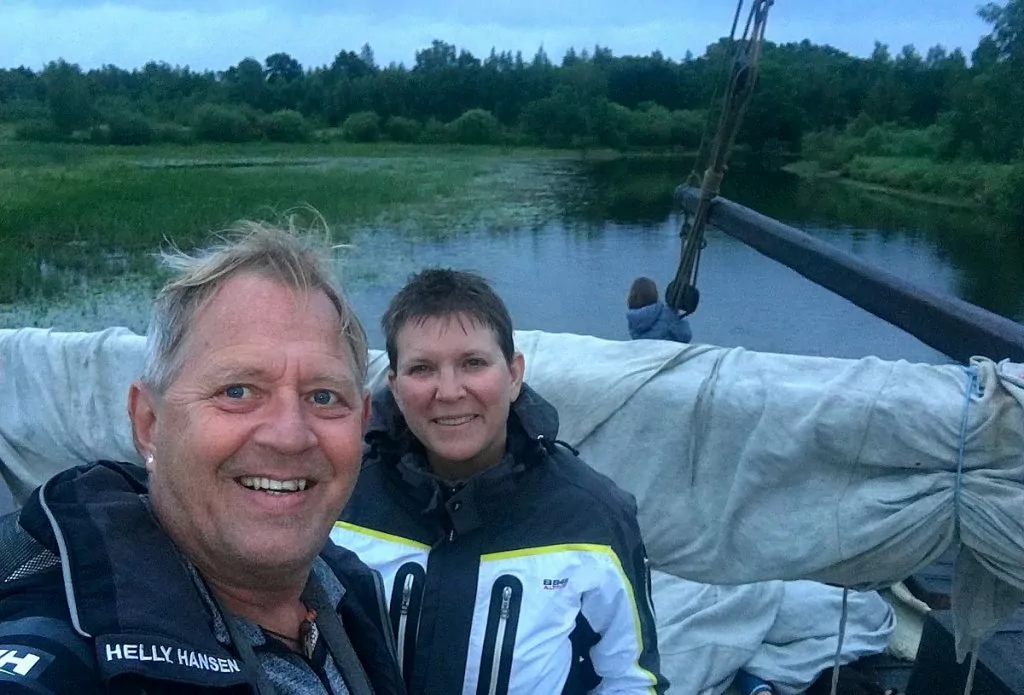
Afterwards we found our way to the "sauna boat" where we drank and took a sauna. We met really nice locals and also a couple from Stockholm, where the woman had her roots in this very area. A nice and late evening! The photo shows when the sauna boat the next morning when it drives on to the next village ...
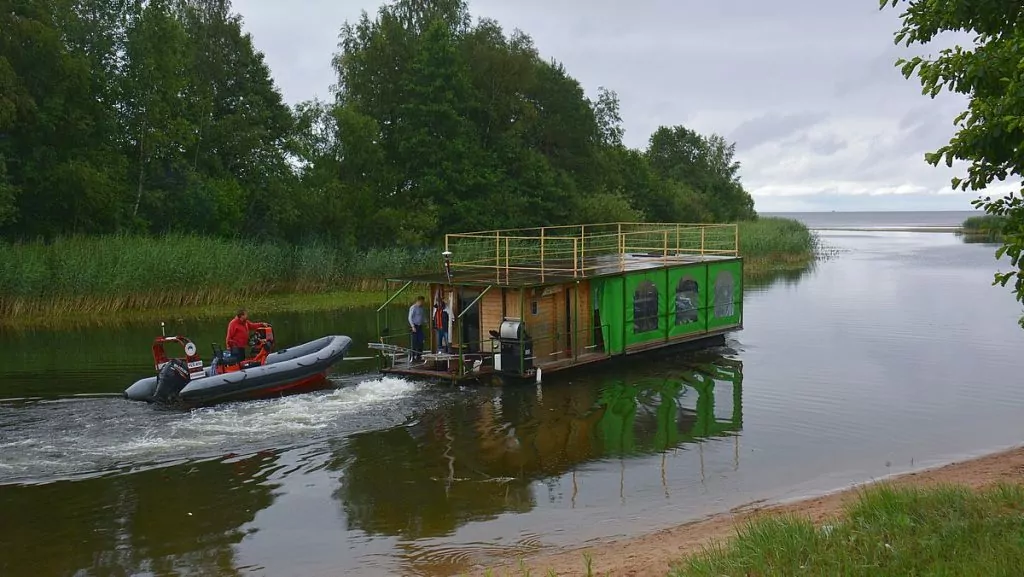
De gammaltroende - The old believers
Many of the people living around Lake Peipus in Estonia belong to the 'Old Believers', or 'Raksolniks' as they may also be called. These are the descendants of the Orthodox Christians in Russia who left the Russian Orthodox Church in the Great Schism of 1666-1667 (raskol). The group refused to submit to the new church order, and as a result they were persecuted and their priests burned alive.
Around 30 000 Old Believers fled to Estonia, and were allowed to settle on Lake Peipus. This part of the country was considered 'worst' because the soil was wet and difficult to grow crops. The group discovered that they could grow onions and still live there. Today, the Old Believers' communities have around 15 000 members.
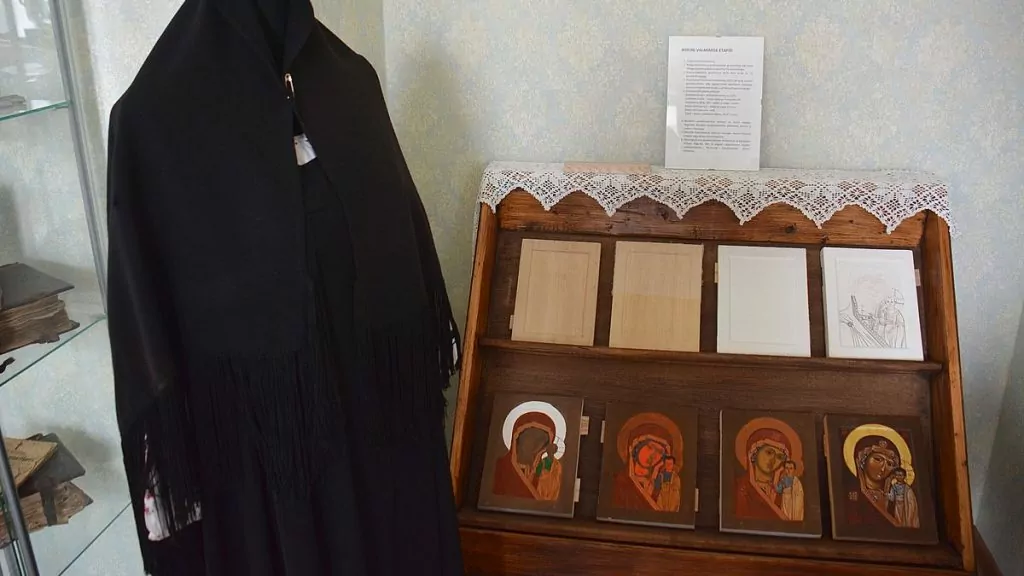
Peipsimaa Museum - museum of the Old Believers
Peipsimaa Museum is a brand new museum of the Old Believers, which we visited. The museum is located in Tiheda, just south of Mustvee. Here we got a really interesting guided tour!
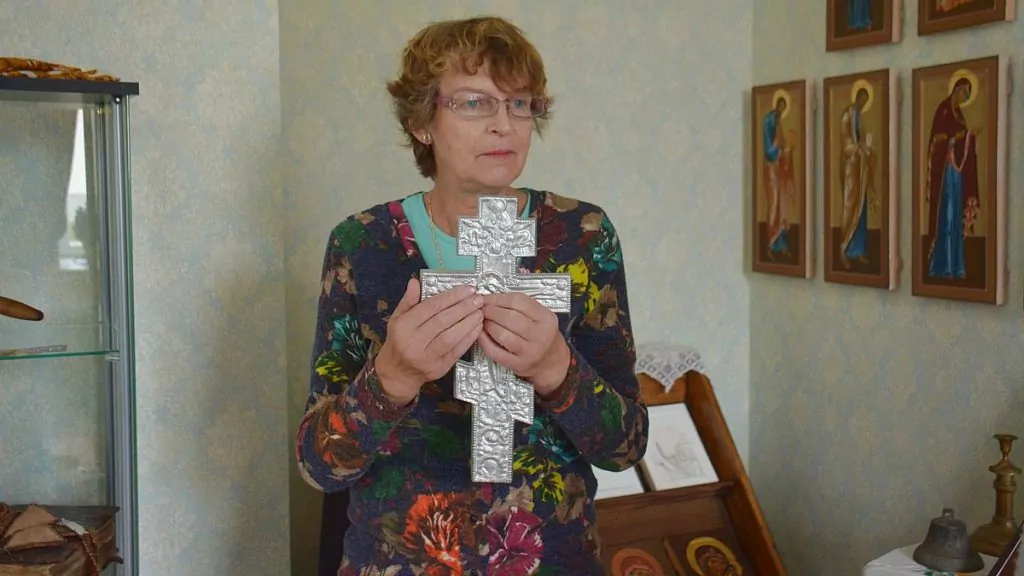
In the past, Old Believers always wore black (except on important holidays) and were not allowed to drink alcohol or smoke. Today the rules have been relaxed and most wear plain clothes, but many pray several times a day and most follow a strict diet.
Many days of the year have special food rules; for example, one day you can eat rice but not eggs, while another day you can eat eggs but not rice. The children usually attend Russian-speaking schools, together with Russian-speaking children who are not Old Believers, and in order to avoid the complexity of all the food rules, the children bring their own lunch boxes.
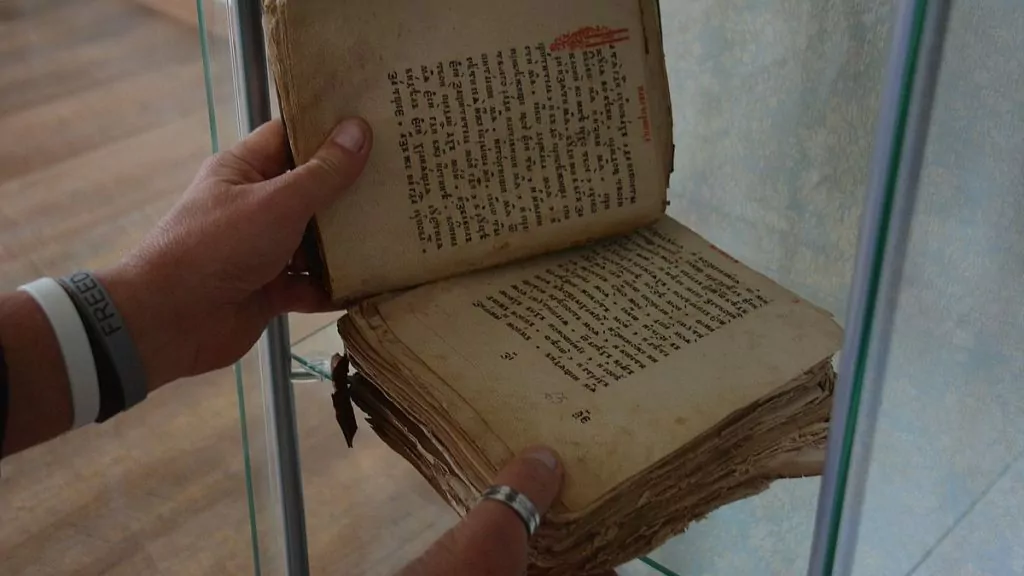
We were invited to tea at the museum and were taught how to drink as the Old Believers did in the past. We put a sugar cube in our mouths, poured the tea into the saucer and drank, as we Swedes did in the past.
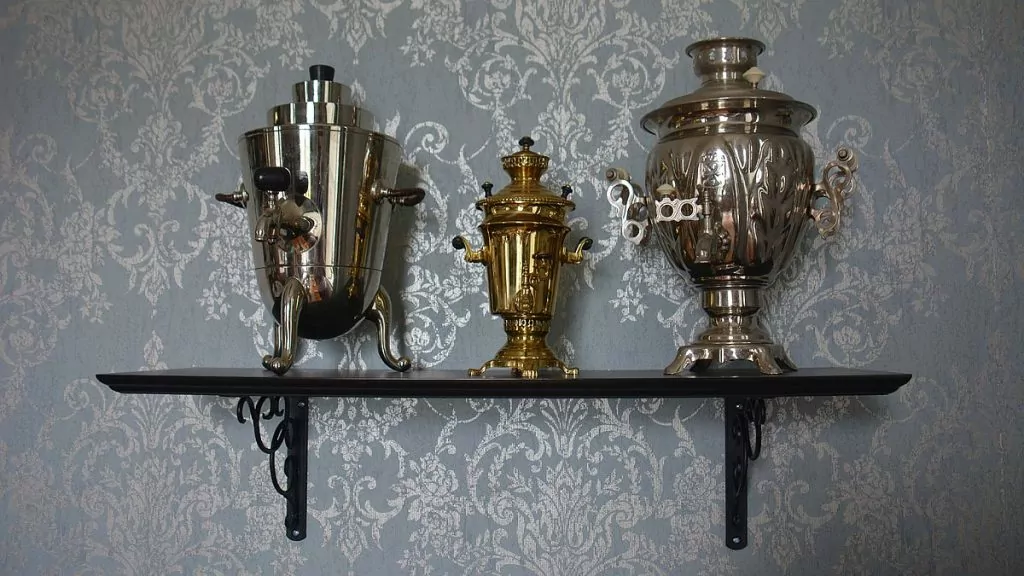
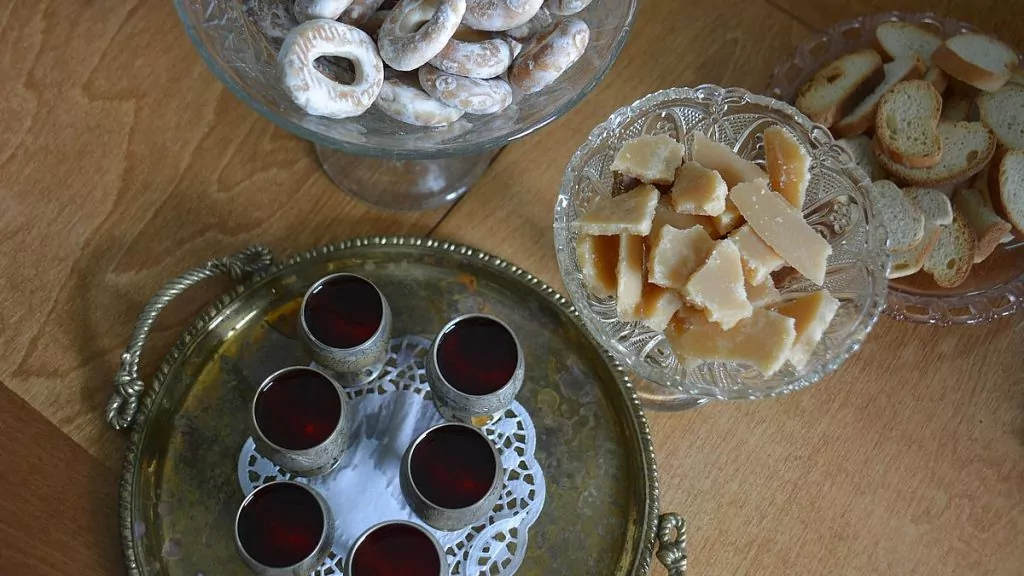
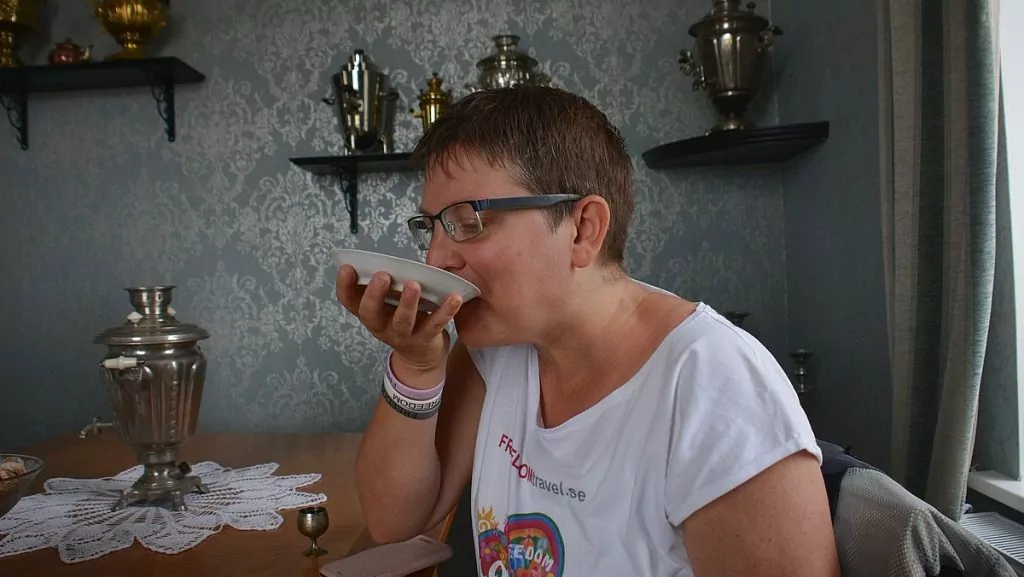
The city of Kallaste
We continued south along the lake and took a look at the cosy little town of Kallaste, which with its 800 inhabitants is Estonia's smallest town.
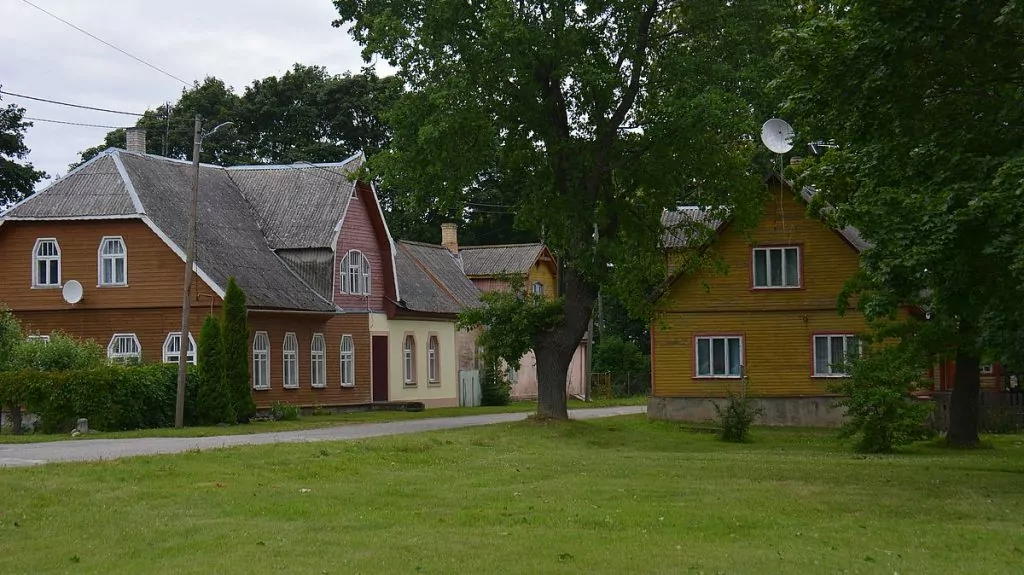
Alatskivi Castle
From Kallaste it was very close to Alatskivi Castle. This castle was completed in 1885, commissioned by Baron Georg von Nolcken for his wife Caroline Elise von Loewenstern. The castle blends Estonian culture with influences from Scotland and Germany.
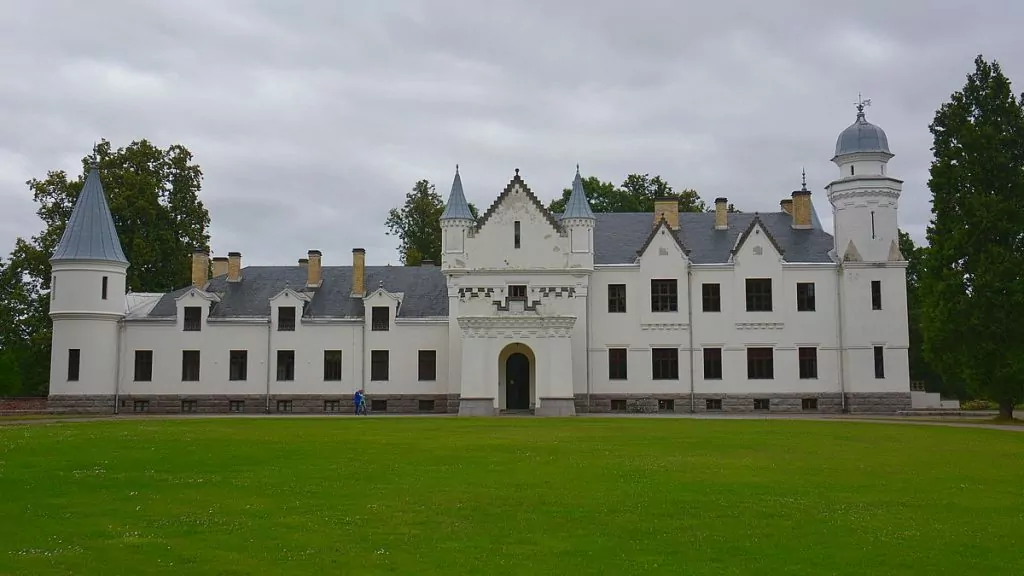
We had a guided tour of the castle, which was very nice and interesting. The owners had to give up the castle during the communist land reform, and then moved most of the interior to Germany. The interior today is recreated to look like the original, but since it is not original, unlike other castles, you can sit down wherever you want.
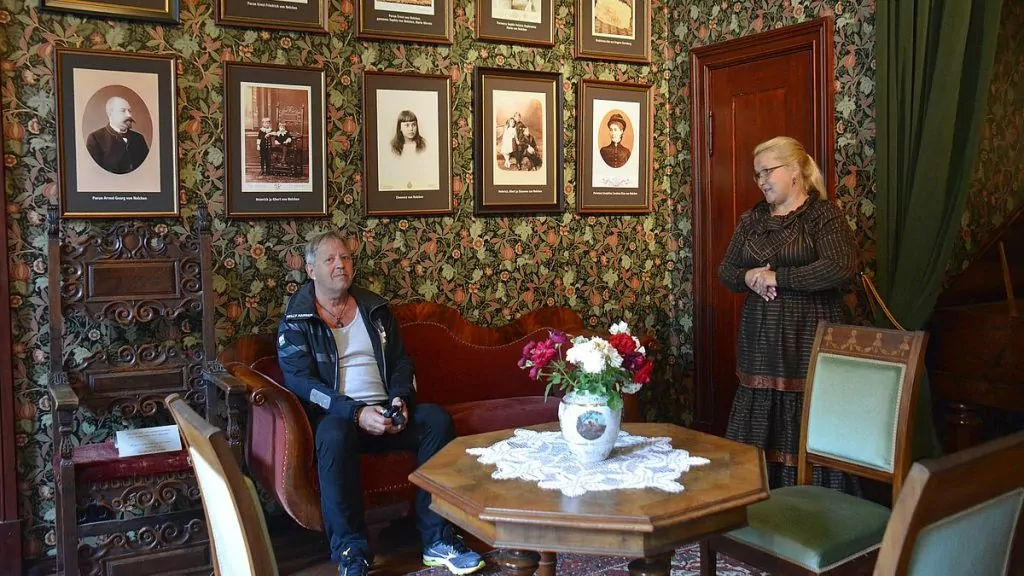
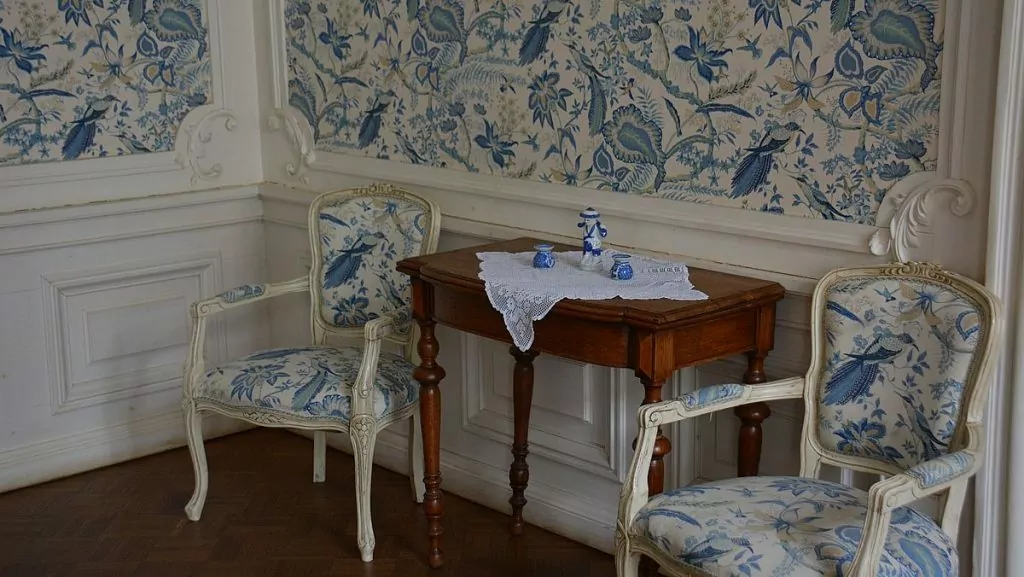
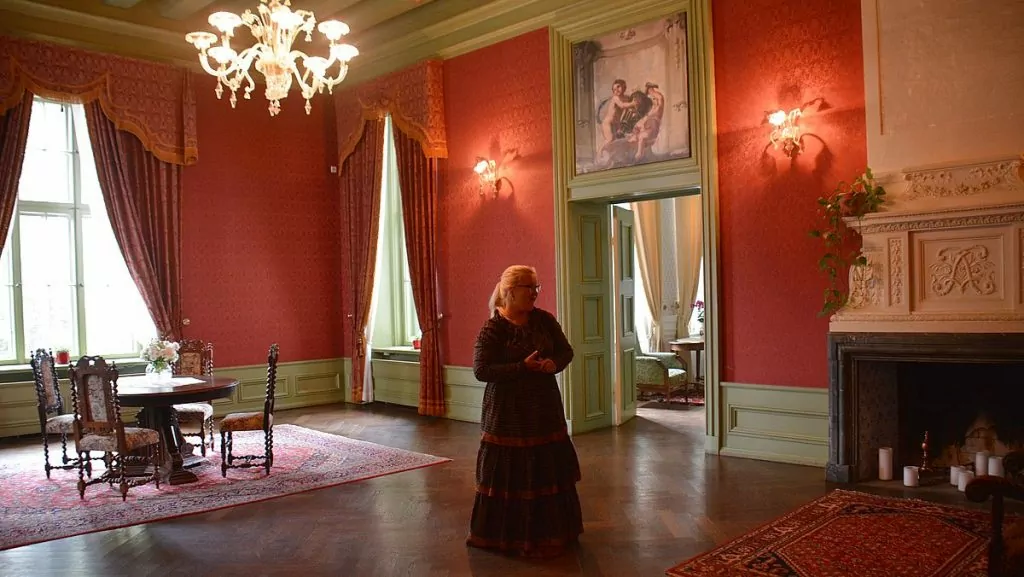
In the past, the basement floor was only occupied by servants, and there is now an exhibition about them. The castle also houses an exhibition on the Estonian-Swedish Eduard Tubin, who comes from this region.
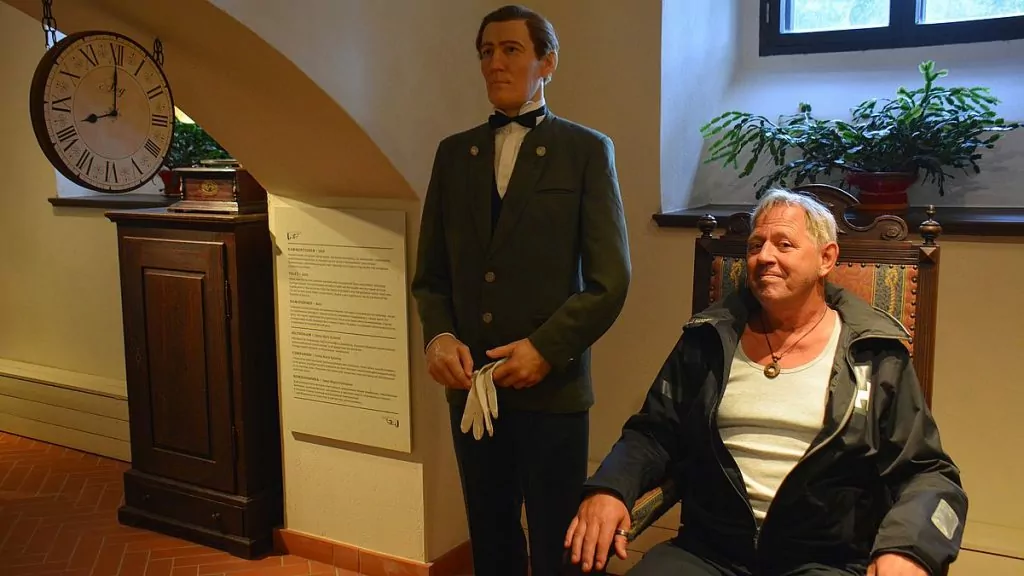
We had lunch at the castle's restaurant; super good perch and an equally good cheesecake. There is also a newly opened café at the castle, and those who want to stay over can sleep in one of the castle's four rooms. You just have to be prepared to perhaps get a visit from the (nice) ghost of the castle. One of the tower rooms is built without a door - and that's where the ghost lives!
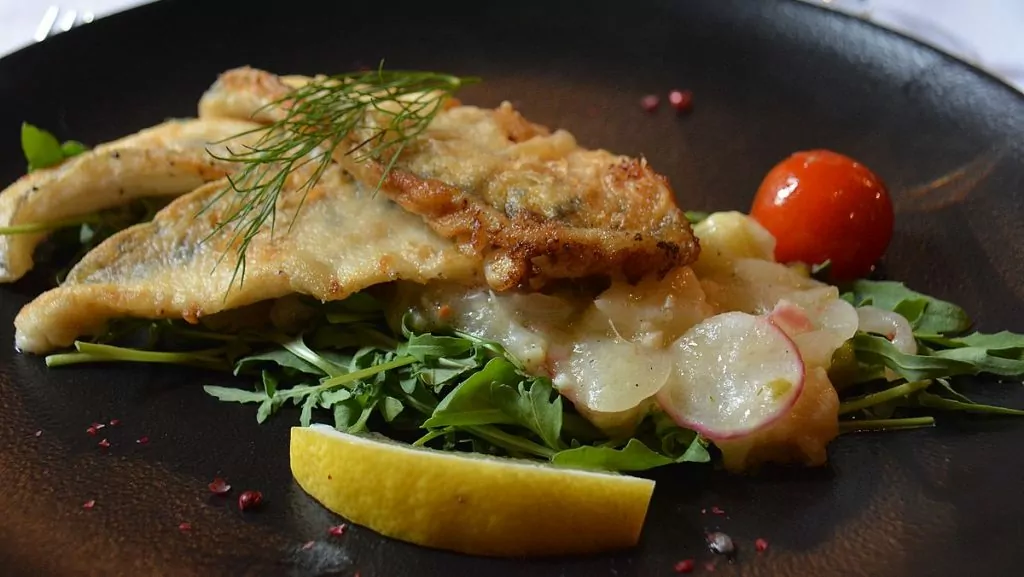
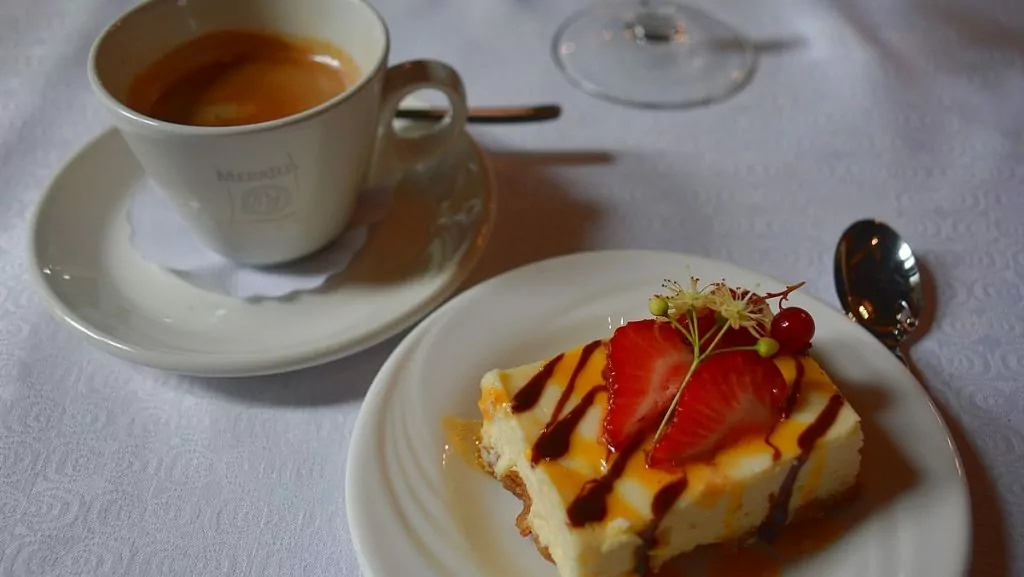
Visit to an onion farmer
After the visit to the castle, Katrin, from Visit Peipsi, took us to one of the many onion growers at Lake Peipus. Here they grow all onions. The onion grows well in the wet soil and also tastes different from other onions. However, making a living from onion farming is difficult. The onion farmer we visited told us that he grows two tonnes of onions a year "as a hobby", and sells them to tourists who pass by. Many people in the area are retired and use onion farming to supplement their pensions.
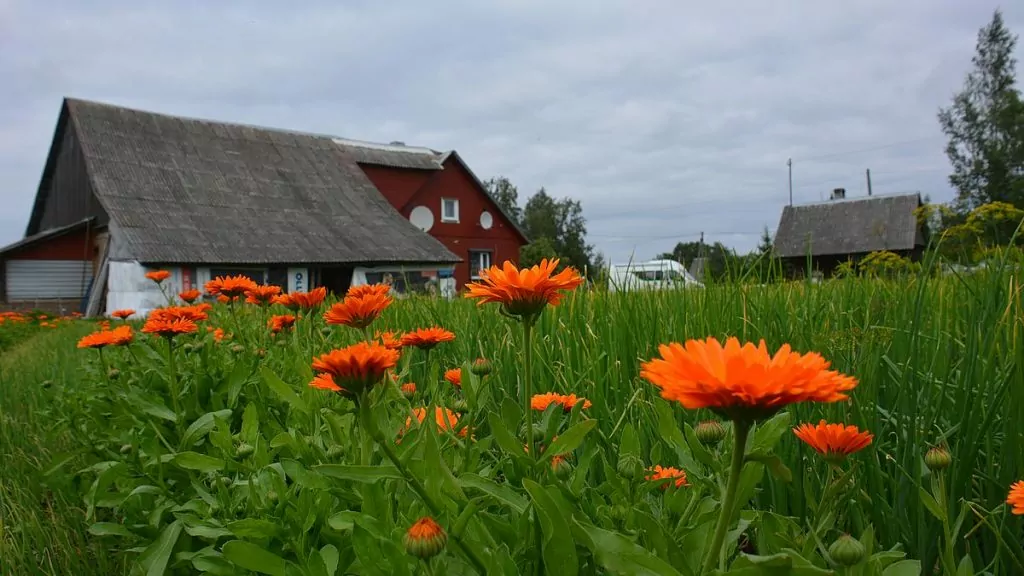
The onion goes through different phases, and in the first year it looks like the flowers in the picture below.
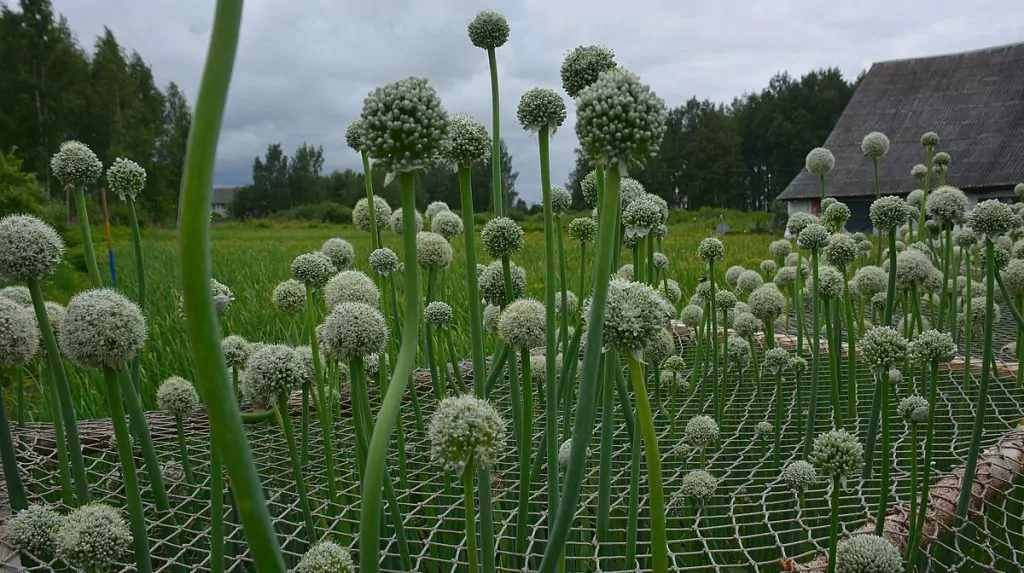
In addition to onions, carrots, peas and various plants that can be used for tea and as medicines were grown.
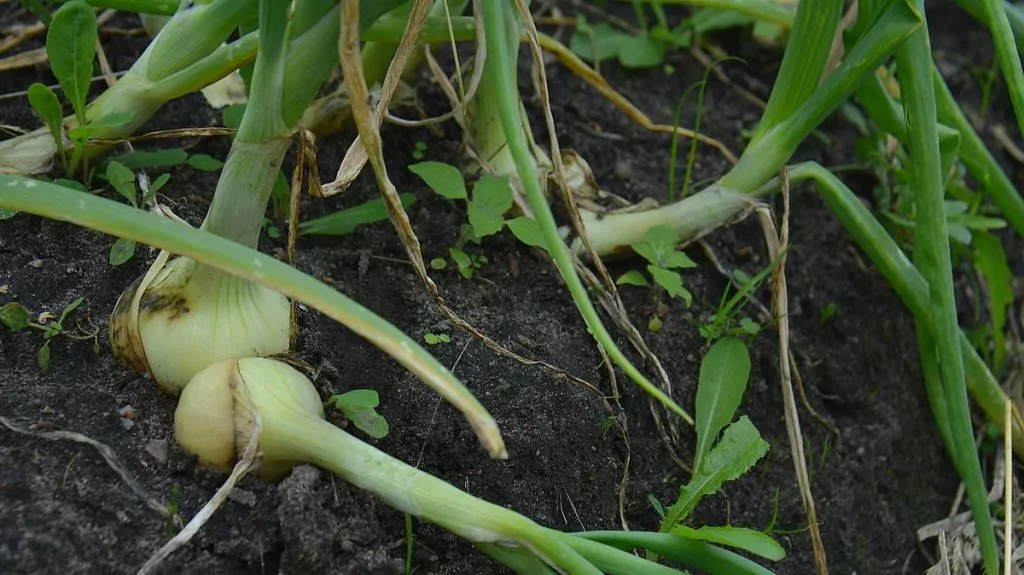
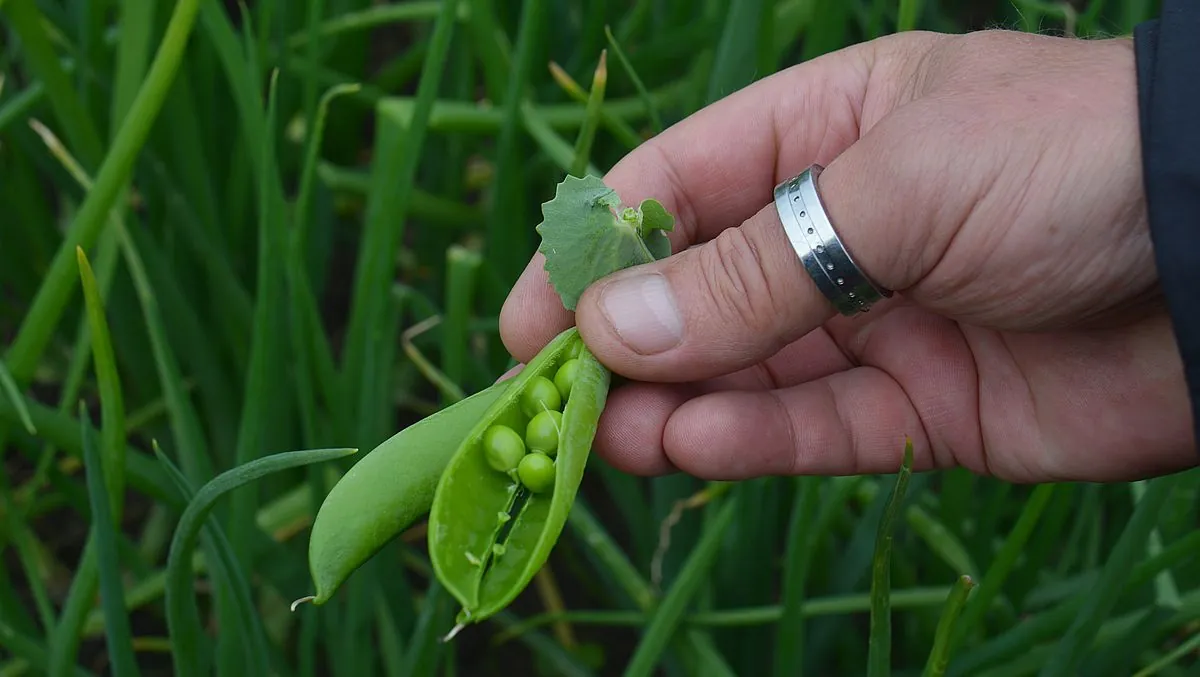
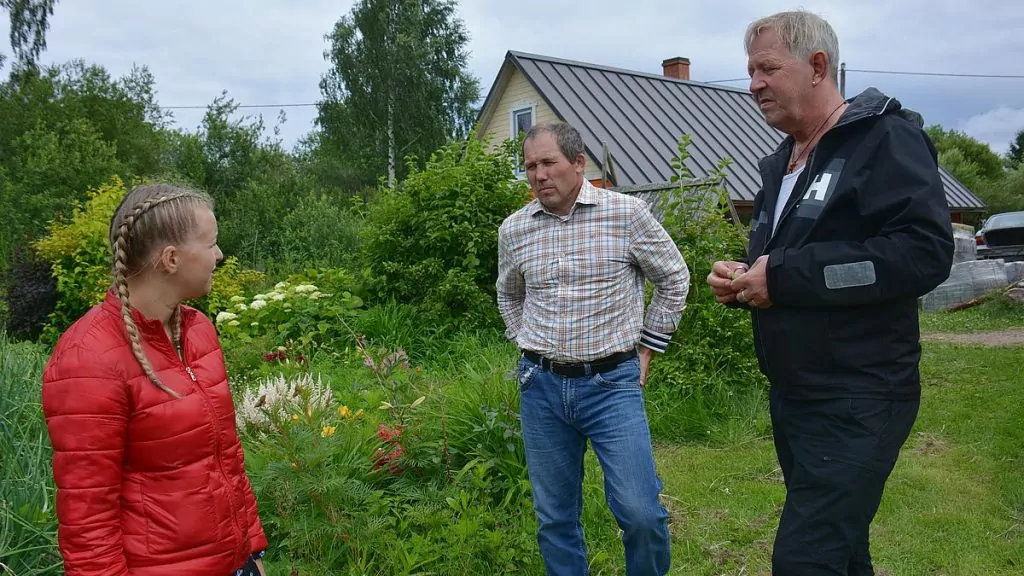
We were invited to tea and a delicious pie with onion filling. It is nice along the lake, but the area is gradually depopulating and no one here knows what the future will be. There are not many jobs here, and the young people choose to move to Tartu, which is a university town full of young people.
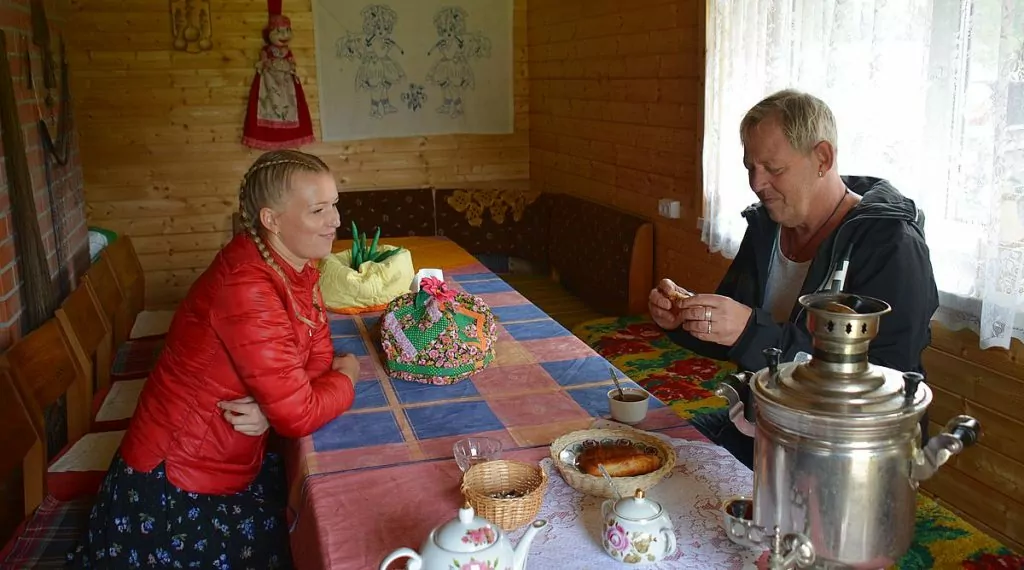
Free camping at Lake Peipus in Estonia
In the evening we fricamped on the beach in Varnja. Absolutely fantastic! Here we were, all alone, at a nice beach. At the beach there were also barbecue areas, toilets and rubbish collection.
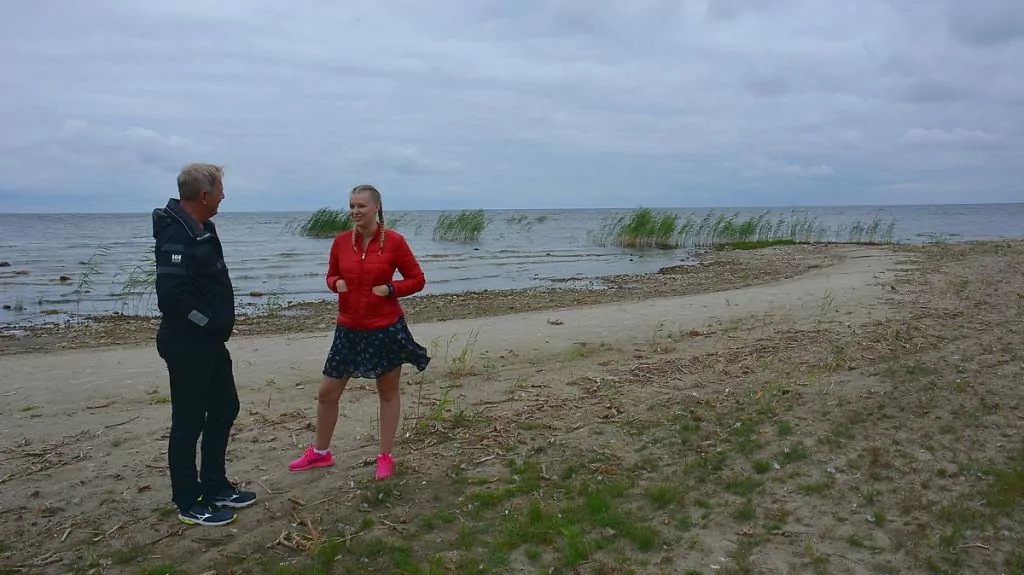
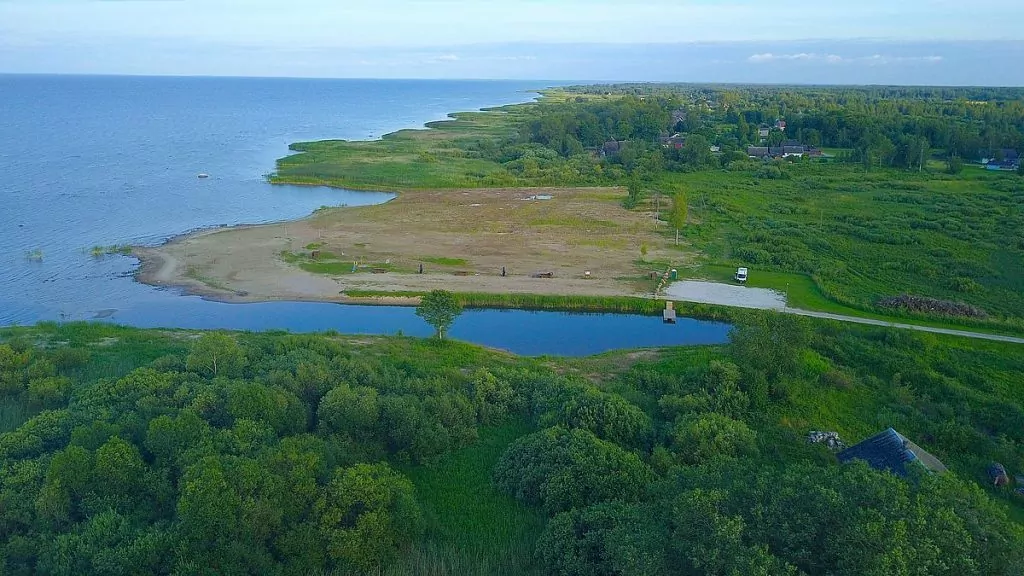
Keila waterfall in Estonia - and a romantic park
In cooperation with the Estonian Tourist Board Keila Waterfall in Estonia is the country's third largest waterfall and is located...
Lahemaa National Park in Estonia - nature and mansions
In cooperation with the Estonian Tourist Board Lahemaa National Park in Estonia is a large natural area that offers...
Rakvere fortress in Estonia - history and spectacle
In cooperation with the Estonian Tourist Board Rakvere Fortress is located on a hill in the town of Rakvere in the north of...
Kynö in Estonia - the island where women are in charge
In cooperation with the Estonian Tourist Board Kynö in Estonia is a small and very special island. It...
An excursion to Kadriorg Palace in Tallinn, Estonia
It's all over the place here! A few days ago we were in Malta and now we are in...
Narva in Estonia - on the border with Russia
In cooperation with the Estonian Tourist Board Narva in Estonia is the EU's outpost against Russia, with the border crossing...
Facts about Estonia - 30 things you (might) not know
Here are the facts about Estonia - 30 things you (maybe) didn't know about the country. Estonia is...
Ferry to Tallinn - what not to miss
If you follow our blog, you know that we travelled by ferry to Tallinn during the Easter holidays. We...
What to do in Tallinn - 30 sights and experiences
Looking for tips on things to see and do in Tallinn? We've visited Estonia...
Motorhome holiday in Estonia - starting in Tallinn
We're finally off on a motorhome trip in Estonia, exploring the country for three weeks! We...
Pärnu in Estonia - beaches, spas and villas
In cooperation with the Estonian Tourist Board Pärnu in Estonia is known for its beaches, spas and...
Things to do in Estonia - 30 sights and experiences
What to see and do in Estonia? We offer 30 tips for a country...
Saaremaa in Estonia - the island of windmills
Saaremaa in Estonia is an island in the Baltic Sea the size of Gotland, known to all...
Dagö in Estonia - among lighthouses and Swedish history
In cooperation with the Estonian Tourist Board Dagö in Estonia is a green and scenic island, where...
The cliffs of Ontika in Estonia - and Oru Park in Toila
In collaboration with the Estonian Tourist Board The cliffs of Ontika in Estonia are dramatically steep rock faces that plunge into the...
10 things to do in Tartu, Estonia
What to do in Tartu, Estonia? We spent three days in this...
Proto discovery workshop - experience centre in Tallinn
The Proto Discovery Workshop is an experience centre in Tallinn where you can discover and experience early technological developments,...
Ferry to Estonia - Tallink silja vs DFDS
Ferry to Estonia, which one to choose? On our last trip to Estonia, we tried two different ferry...
Rally Estonia in Tartu - a great festival of people
In cooperation with the Estonian Tourist Board Rally Estonia in Tartu is a great folk festival that attracts...
Travelling by motorhome in Estonia - all you need to know
What is it like travelling with a motorhome in Estonia? We have just returned home after barely...
2 good hotels in Tallinn, Estonia - luxury or colour?
We have now tried two different good hotels in Tallinn, Estonia. The first night we stayed ...
Cruise Stockholm - Tallinn with Victoria I
We have been on a cruise Stockholm - Tallinn with Victoria I from Tallink Silja Line. So...
Exploring the port of Tallinn, Estonia
One of the best things about travelling is discovery. Going on unplanned...
The highest mountain in the Baltics - Suur Munamägi in Estonia
In cooperation with the Estonian Tourist Board We have "climbed" the highest mountain in the Baltics - Suur Munamägi in Estonia....
Guided tour of Tallinn - the Kalamaja neighbourhood
Today you can join a guided tour in Tallinn, Estonia! We love guided tours. When...
Haapsalu, Estonia - noise village charm on the coast
In collaboration with the Estonian Tourist Board Haapsalu in Estonia is a beautiful wooden town on the Estonian coast....
Tourest 2020 travel fair in Tallinn - travel destinations and delicacies
We have visited the Tourest 2020 travel fair in Tallinn, Estonia. Really fun and inspiring! The fair offers both ...
Rummu quarry in Estonia - prison turned bathing paradise
In cooperation with the Estonian Tourist Board Rummu quarry in Estonia is a very different sun and bathing paradise,...
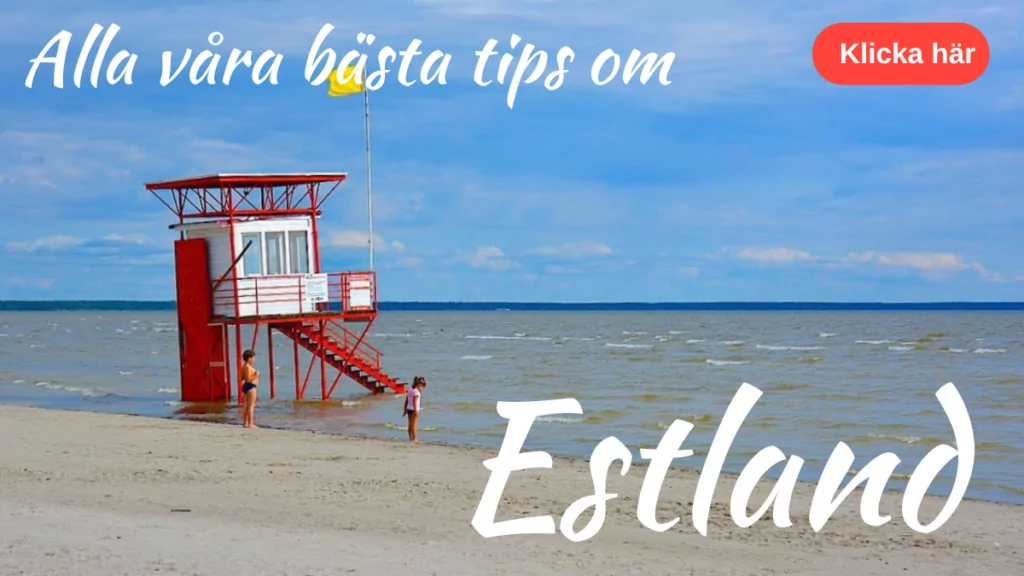
Facts about Lake Peipus in Estonia
- Name: Peipus (in Estonian Peipsi)
- Size: 3550 square kilometres
- Average depth: 7 metres
- Deepest point: 15 metres
- Lake areas: The lake is divided into three lake areas. The northernmost part occupies 73 per cent of the lake's surface. The middle one is the smallest (7 per cent) and is called Lämmijärv in Estonian. The southernmost part is called Lake Pskov (Pihkva järv) and accounts for about 20 per cent of the total surface area.
- Field of application: Fishing and leisure
Things to see and do around Lake Peipus
- Towns and villages: Vasknarva, Rannapungerja, Lohusuu, Mustvee, Kallaste, Kolkja, Varnja, Emajõe-Suursoo, Piirissaare, Mehikoorma, Võõpsu and Värska.
- Museum: Peipsimaa Museum (Address: Sõpruse 86, Tiheda küla) is open Tuesday-Sunday all year round. Adults pay €4 and seniors and students pay €2.
- Castle: Alatskivi Castle (Address: Lossi tänav, Alatskivi) is open Tuesday-Sunday in summer and Wednesday-Sunday the rest of the year. The castle can be visited for a fee of €7 for adults, €5 for seniors and €4 for students. The guided tour in English costs €24 (2019).
Historical facts
- 13th century: In 1242, a battle between Novgorod troops led by Alexander Nevsky and German crusaders took place on the ice of Lake Peipus. The Novgorods were victorious in the battle.
Accommodation on Lake Peipus in Estonia
- Hotel: There are several different accommodation along the lake, in the form of hotels, hostels, guest houses and bed & breakfasts. If you wish, you can stay in one of the four rooms in Alatskivi Castle.
- Camping: There are several smaller campsites around the lake. Free camping is also possible in the area.
Programme "Promoting Estonia as a Tourism Destination" is supported by European Union Regional Development Fund.

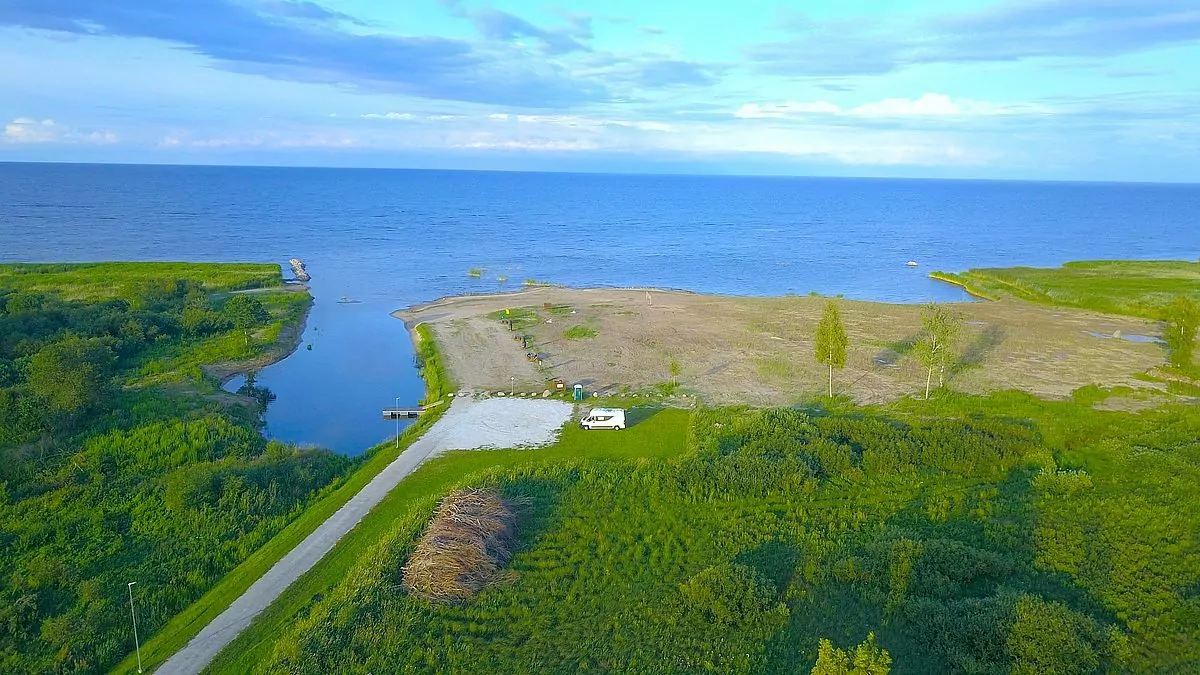
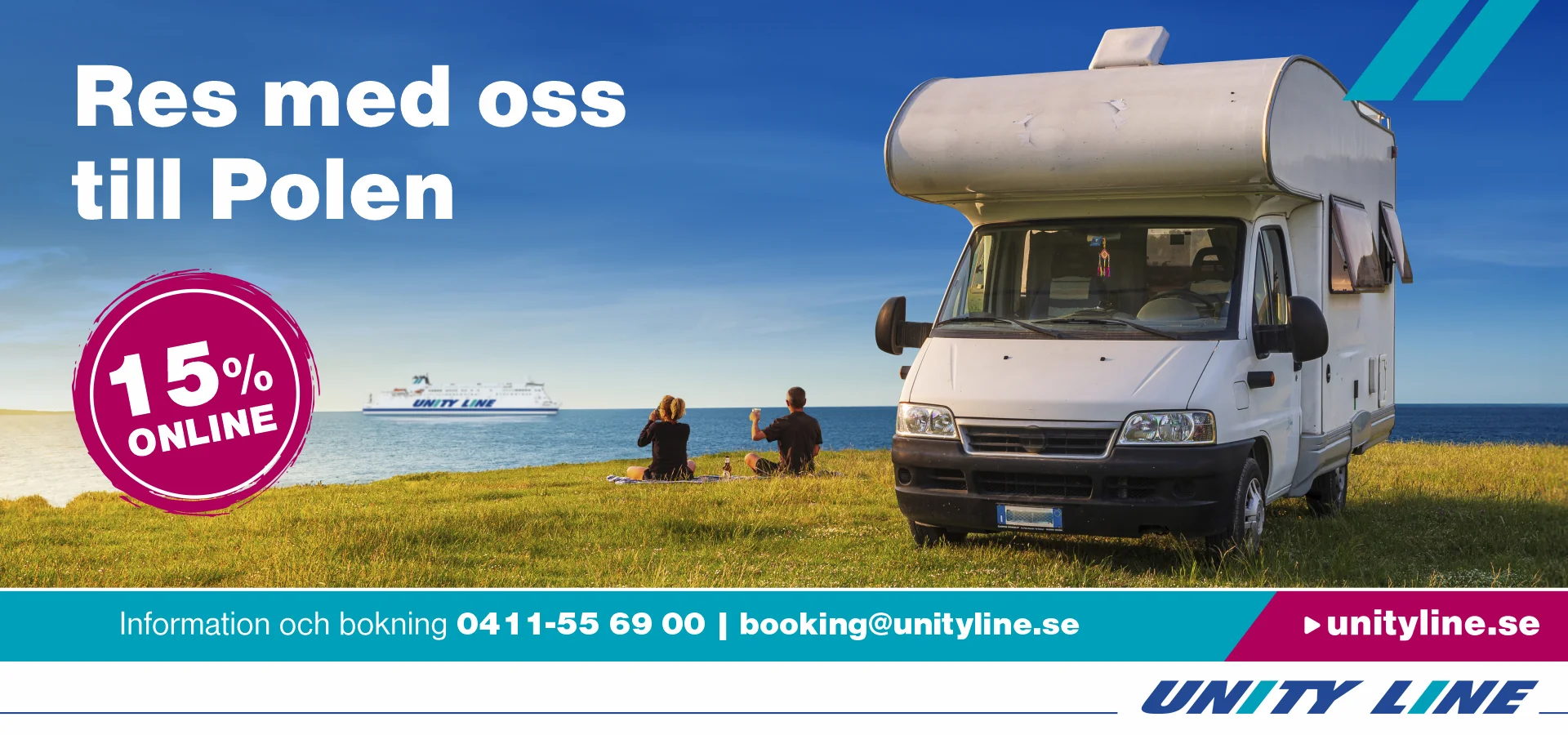








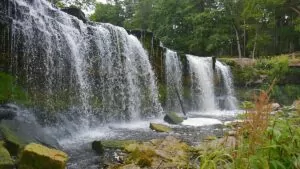
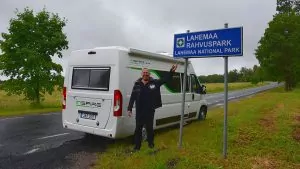
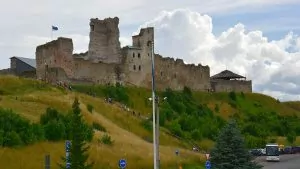
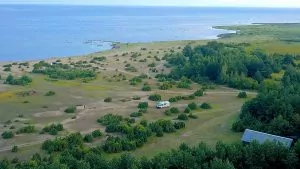
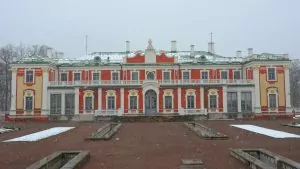
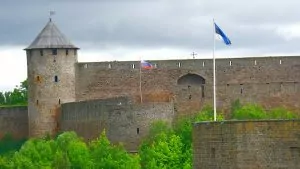
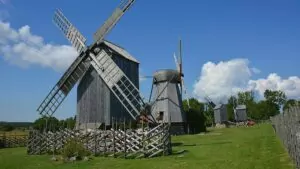
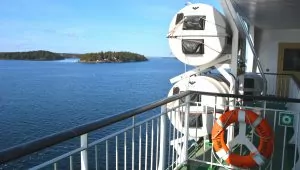
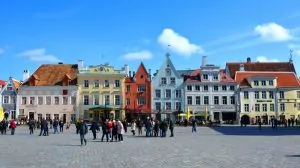
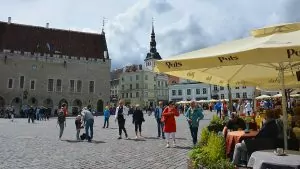
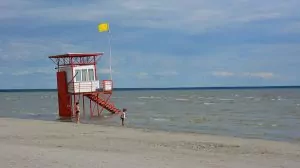
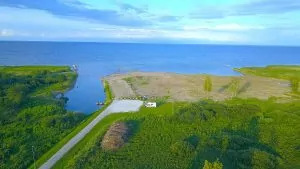
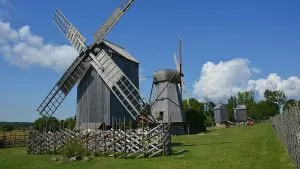
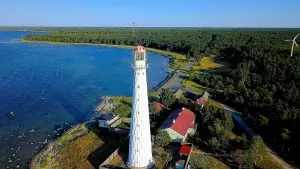
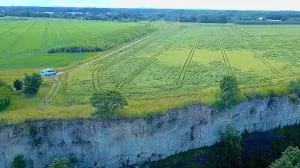
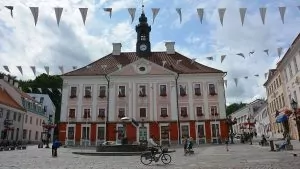
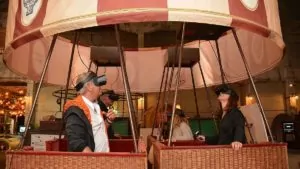
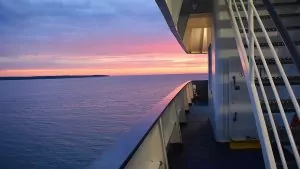
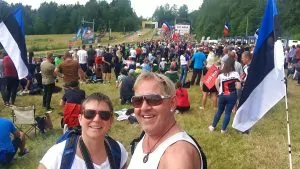
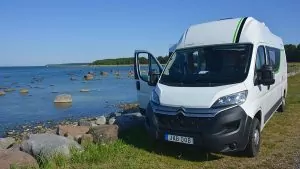
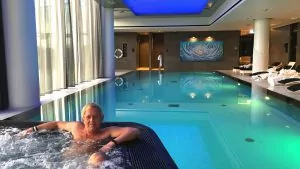
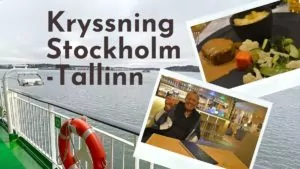
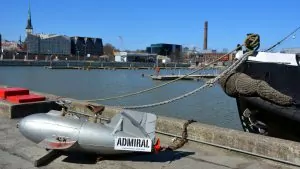
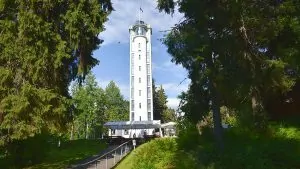
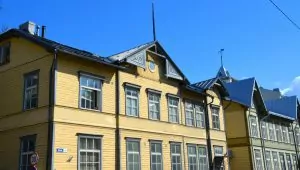
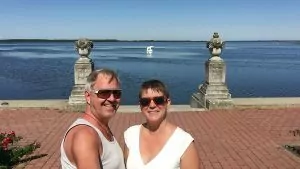
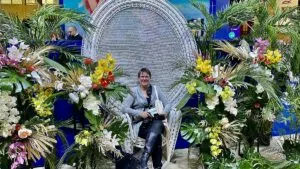
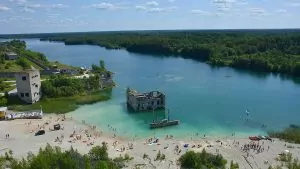
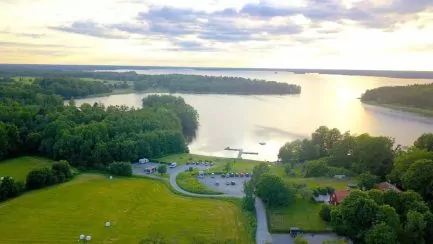
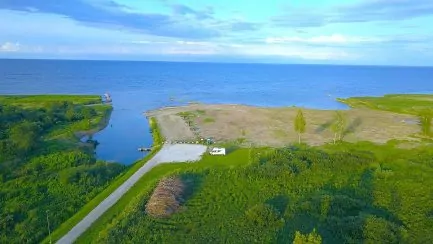
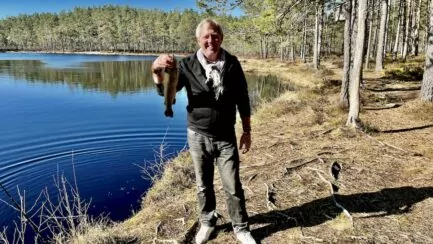
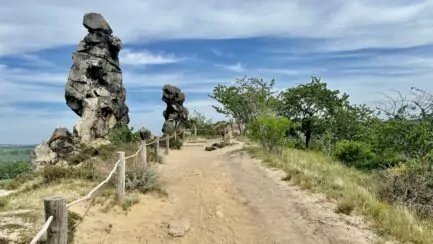
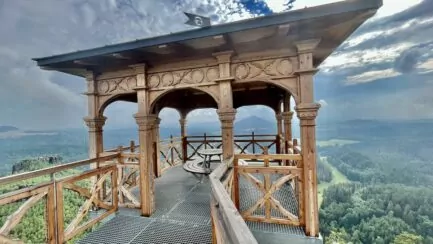
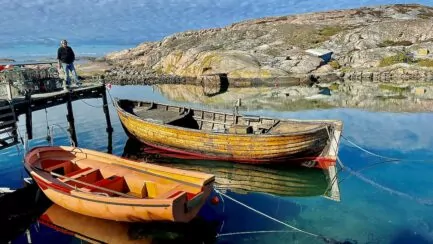



Ama de casa says:
Wow how much you get to be involved in! A floating travelling festival sounded really fun and different 🙂 .
This is how my grandfather always drank his coffee - on tap, that is 🙂 .
Have a great Saturday!
13 July 2019 - 10:01
Helena says:
Yes, fun idea with the festival around the lake! ?? I also recognise that somewhat vague thing about drinking tea or coffee from the barrel! ?
13 July 2019 - 16:20
Elisabeth says:
You will have very varied experiences! We travelled along the lake and walked around ivTsrtu many years ago, but we missed the festival emptying.
13 July 2019 - 13:16
Helena says:
Nice that you have also been here at the lake! ??
13 July 2019 - 16:21
BP says:
The header picture is a real highlight. What a photo. Wonderful adventures. The post really had everything and then some. How convenient to ride shotgun with you.
PS. But we have much better weather here;-) DS.
13 July 2019 - 18:55
Helena says:
Glad you like the picture! We really like this kind of travelling and this kind of adventure!
13 July 2019 - 21:13
Mart Jänes says:
Interesting reading!
14 July 2019 - 10:57
Lena i Wales says:
Very interesting about the Old Believers!
Also other interesting things about Estonia. Have only visited the country a few times, of course Tallin, but also Narva, nice to see again.
14 July 2019 - 11:34
Anna Gunilla Lantz says:
What an interesting trip! Thanks for the story and nice pictures!
19 July 2019 - 11:45